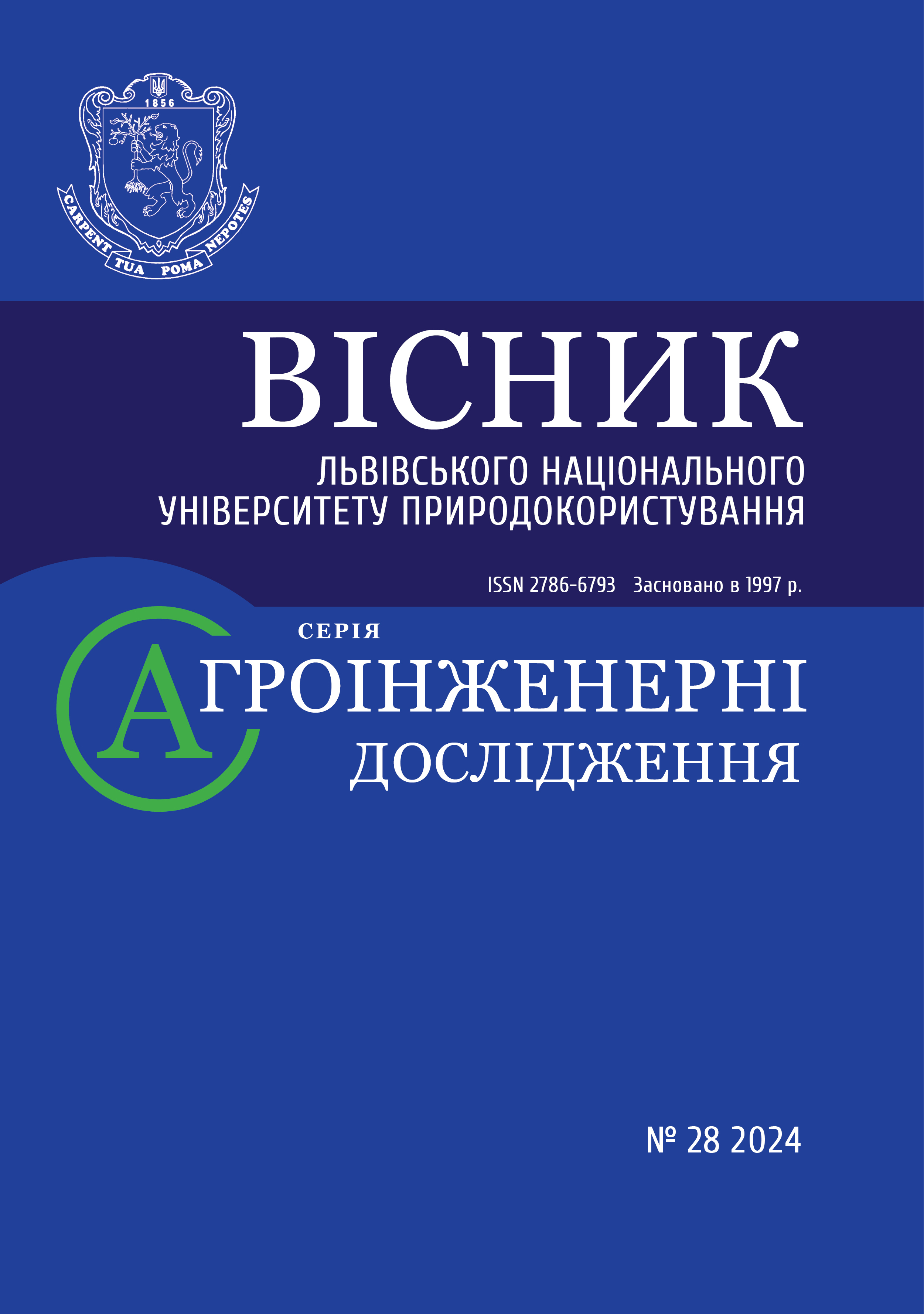Analysis of transient processes in a part of the ultra-high voltage electrical network that contains shunt reactors
DOI:
https://doi.org/10.31734/agroengineering2024.28.094Keywords:
transient electromagnetic processes, shunt reactor, long line, mathematical model, boundary conditions, equation of a long lineAbstract
The article examines scientific publications related to the study of transient processes in electrical network elements, particularly focusing on long power lines with distributed parameters and shunt reactors during both normal and emergency operation modes. The analysis indicates that while the research on transient processes in long power transmission lines is pertinent, there is still insufficient exploration regarding those processes associated with shunt reactors. Using a generalized interdisciplinary modeling method, which modifies the integral Hamilton-Ostrogradski variational principle, a mathematical model of a portion of the electrical network has been developed. This model primarily includes long power lines with distributed parameters and incorporates air chokes. The model is presented in a single-line representation. The mathematical model is based on the equation of a long line with second-order partial derivatives. To address this equation, the Neumann and Poincaré boundary conditions are proposed. The object model was implemented through numerical methods by discretizing the line equations using the straight line method. The voltage at the fictitious node of the power transmission line was calculated, and its behavior was illustrated. A program was written in the Visual Fortran programming language based on the developed mathematical model, which facilitated numerical experiments. With this model, electromagnetic transient processes in the power system were analyzed under the condition of a symmetrical three-phase fault. The results of the computer simulation are presented in the form of diagrams that have been thoroughly analyzed, alongside recommendations for potential users.
References
Chaban, A. V. (2015). Pryntsyp Hamiltona-Ostrohradskoho v elektromekhanichnykh systemakh. Lviv: V-vo Tarasa Soroky.
Chaban, A., Lis, M., Szafraniec, A., & Levoniuk, V. (2022). An application of the Hamilton-Ostrogradsky principle to the modeling of an asymmetrically loaded three-phase power line. Energies, Vol. 15, Is. 21, 8255.
Chaban, A., Lis, M., Szafraniec, A., & Levoniuk, V. (2022). Mathematical modelling of transient processes in a three phase electric power system for a single phase short-circuit. Energies, Vol. 15, Is. 3, 1126 – 1143.
Chaban, A., Lis, M., Szafraniec, A., Levoniuk, V., & Chaban, V. (2022). An analysis of transient processes in a three-phase long power supply line including an asymmetric RLC load. Przeglad elektrotechniczny, 12, 209 – 212.
Czaban, A., Lis, M., Chrzan, M., Szafraniec, A., & Levoniuk, V. (2018). Mathematical modelling of transient processes in power supply grid with distributed parameters. Przeglad Elektrotechniczny, 1, 17 – 20.
Huang, J., Shen, B., & Yang, F. (2014). Simulation model of shipboard low voltage molded case circuit breaker based on PSCAD/EMTDC. Journal of Power and Energy Engineering, 2, 532 – 540.
Lezhniuk, P., Kulyk, V., Netrebskyi, V., & Teptya V. (2014). Principle of least action in electrical engineering and power engineering. Vinnytsia: VNTU.
Nobre, D. M., Boaventura, W. C., & Neves, W. L. (2005). Phase-Domain network equivalents for electromagnetic transient studies, The materials International Conference on Power Systems Transients (IPST’05). Montreal.
Pereira, C., Carneiro, S., & Szczupak, J. (2003). Synthesis of transient equivalents using digital filters for real time simulation of electromagnetic transients in large electric power systems, The materials International Conference on Power Systems Transients – IPST 2003. New Orleans.
Perzynski, T., Levoniuk, V., & Figura R. (2023). Transient electromagnetic processes analysis in high voltage transmission lines during two-phase short circuits. Sensors, 1, 298.


